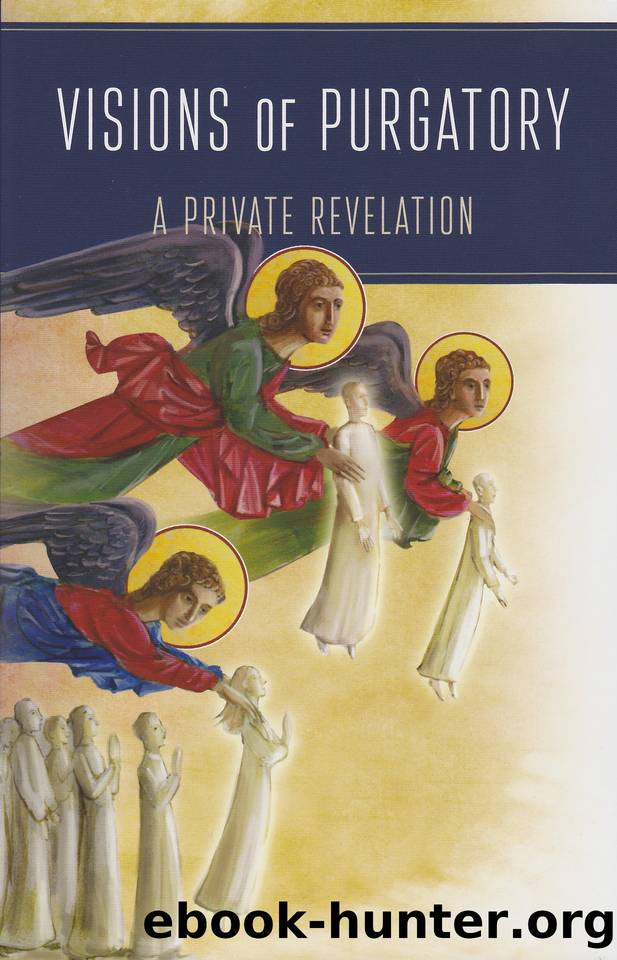Visions of Purgatory: A Private Revelation by Anonymous

Author:Anonymous [Anonymous]
Language: eng
Format: epub
Publisher: Scepter Publishers
Published: 2014-11-01T16:00:00+00:00
What are the consequences of mortal and venial sin? Well, in mortal sin, man loses his spiritual life and stains his soul, which remains marked by a shameful stain; a grave disorder and an inclination toward evil acts is introduced within his faculties. If the sinner obtains pardon in the sacrament of penance, he recovers the life of grace; his guilt is erased, the blot or stain disappears through the influence of the splendor of grace which once more is exercised upon his soul and which comes from union with God. Mortal sin implies a disordered attachment to perishable goods: it engenders in the soul a disposition or habit if the sin was repeated. This inclination to the disordered pursuit of the sensible good remains, although weakened, after the sin is erased. It is the remains of the absolved sin. Certainly this bad inclination is not dominant; it only exists in the sinner as a habit, unless a very vivid contrition, like that of Mary Magdalene, whose example is cited by St. Thomas, or by the offering of repeated satisfactions, erases it definitively. If that is not the case, these defective dispositions disappear after death. . . . Are they erased in the light of the particular judgment itself, or in purgatory? Opinions differ. St. Thomas writes in his Commentary on the Sentences: “The rigor of the punishment corresponds in a real way to the gravity of the sin in the subject” (Fr. Reginald Garrigou-Lagrange, La vida eterna y la profundidad del alma [Life Everlasting and the Immensity of the Soul ], [Madrid: Rialp, 1960], 276).
If one distinguishes the remains of sin from the obligation of punishment resulting from forgiven but not expiated sins, these words of St. Thomas simply mean that the more strongly an inclination is in the soul of the sinner, the longer will be the punishment destined to expiate it. The obligation of the punishment is like rust, says St. Catherine of Genoa, which is consumed by the fire of purgatory and frees the soul from the debt contracted by sin. The sufferings that constitute the pain of purgatory purify the soul not of its defective inclinations but of the debt of his sin (Summa Theologica , q. 70, a. 7; St. Catherine of Genoa, Treatise on Purgatory , no. 4, pp. 33–34). What is affirmed various times in the text accords perfectly with the interpretation of St. Thomas.
•
As the form is united to matter, forming a single composition; this is the case of the soul and the body. But we have to point out that the fire does not cause a sensible suffering in the soul, but a spiritual suffering by holding it captive. The pain of the senses is not the same in this life as in the other. Here it is caused by material agents; in the next life, it is caused by a fire that ignites a spiritual pain.
•
As the instrument is united to that which is moved by it. But the
Download
This site does not store any files on its server. We only index and link to content provided by other sites. Please contact the content providers to delete copyright contents if any and email us, we'll remove relevant links or contents immediately.
| Clergy | Devotionals |
| Faith | Inspirational |
| Meditations | Monasticism & Asceticism |
| Prayer | Prayerbooks |
| Ritual | Sermons |
More Language of Letting Go: 366 New Daily Meditations by Melody Beattie(2463)
The Holy Spirit by Billy Graham(2443)
To Light a Sacred Flame by Silver RavenWolf(2366)
The Secret Power of Speaking God's Word by Joyce Meyer(2268)
Tuesdays With Morrie by Mitch Albom(2187)
The Lost Art of Good Conversation by Sakyong Mipham(2135)
The Traveler's Gift by Andy Andrews(2025)
Kundalini by Gopi Krishna(1833)
A Kingsbury Collection by Karen Kingsbury(1730)
Finding Chika by Mitch Albom(1654)
Angels of God: The Bible, the Church and the Heavenly Hosts by Mike Aquilina(1638)
As a Man Thinketh by James Allen(1587)
Angels by Billy Graham(1560)
The Yoga of Jesus: Understanding the Hidden Teachings of the Gospels by Paramahansa Yogananda(1535)
Curse Tablets and Binding Spells from the Ancient World by Gager John G.;(1520)
Barking to the Choir by Gregory Boyle(1513)
Autobiography of a Yogi (Complete Edition) by Yogananda Paramahansa(1499)
How To Be Born Again by Billy Graham(1413)
Anxious for Nothing by Max Lucado(1412)
